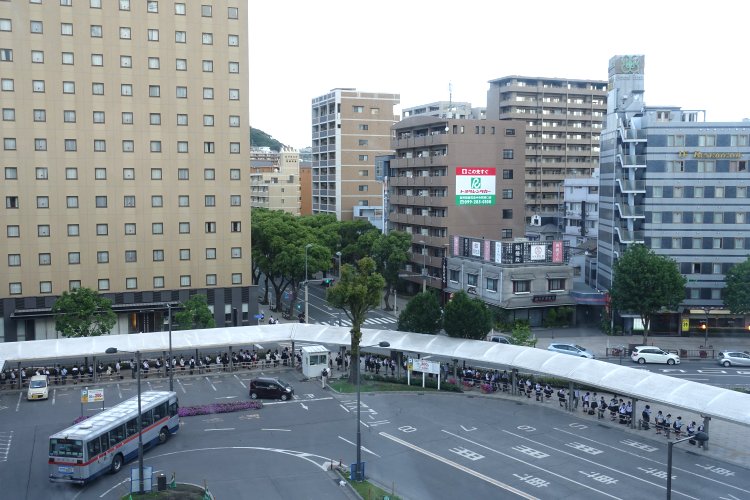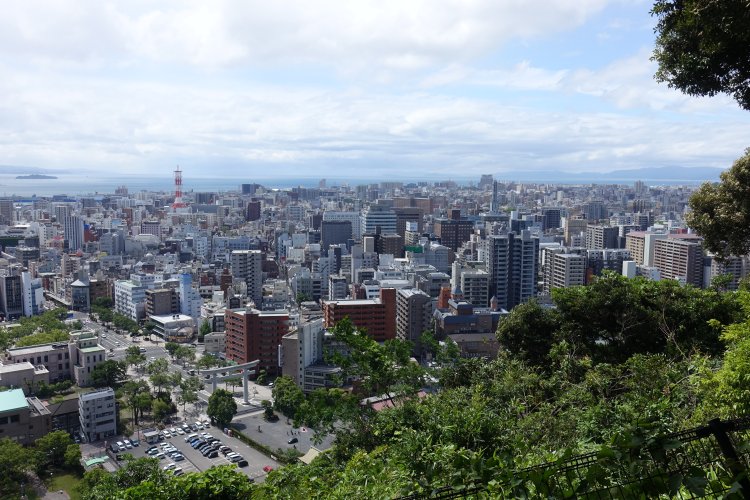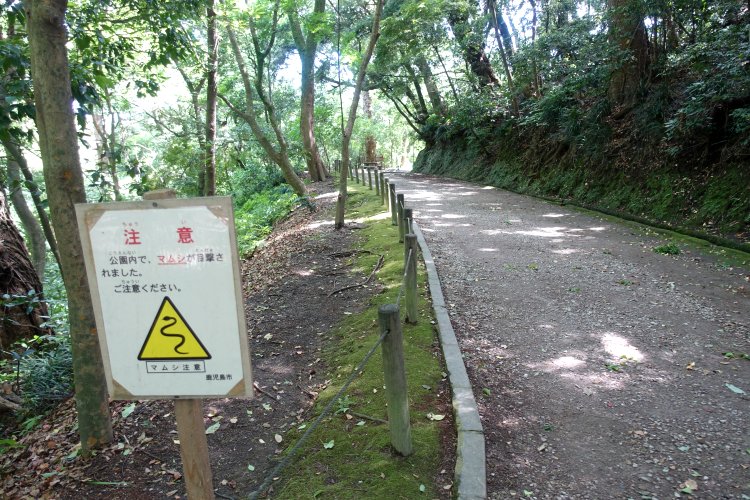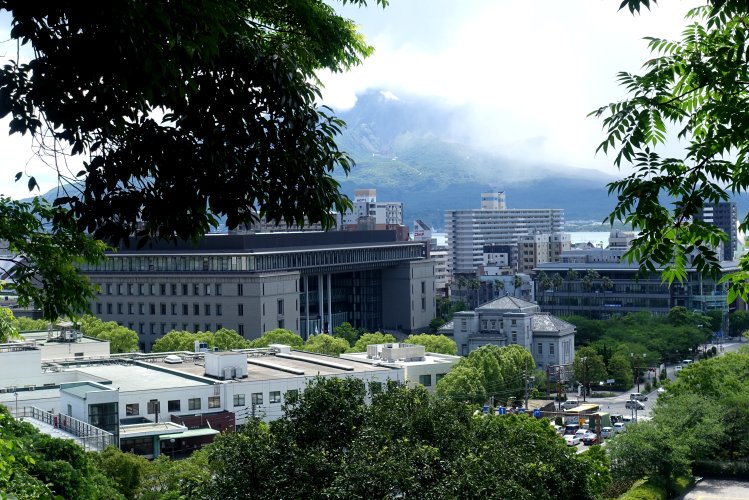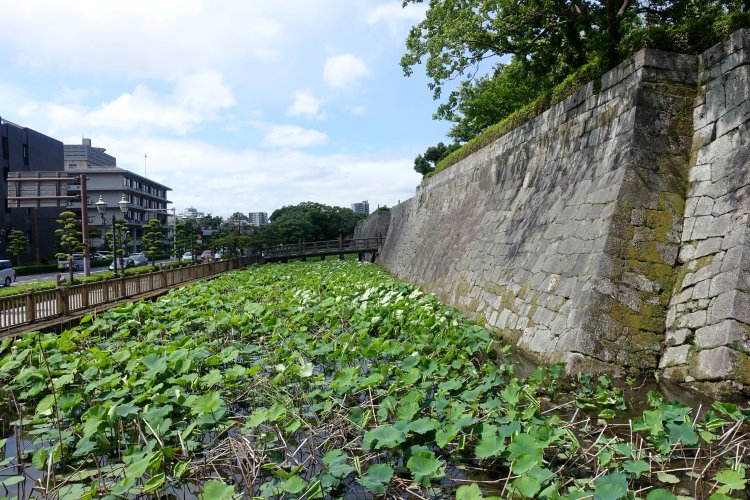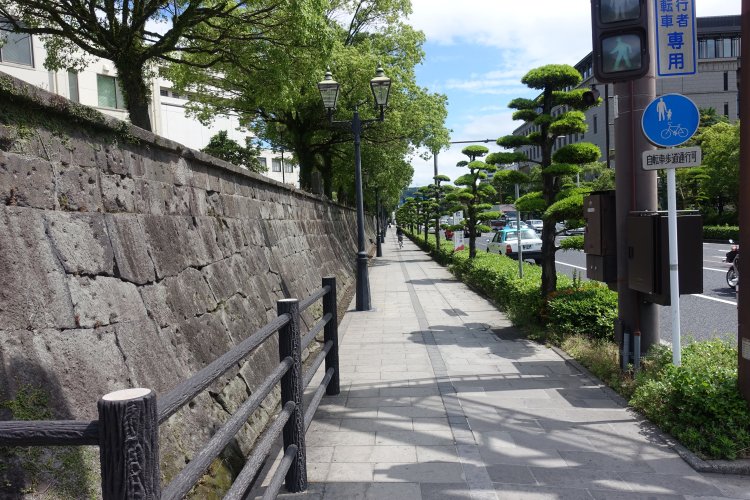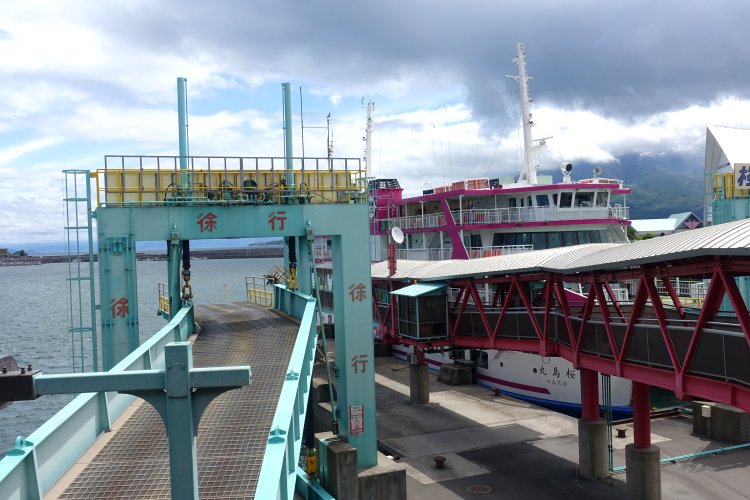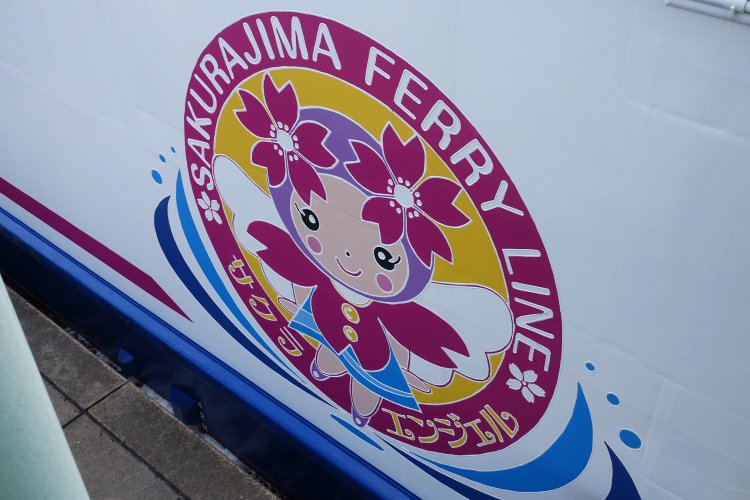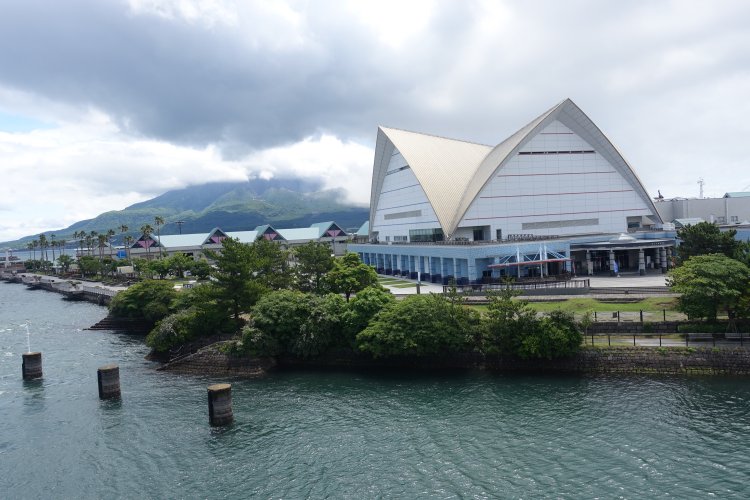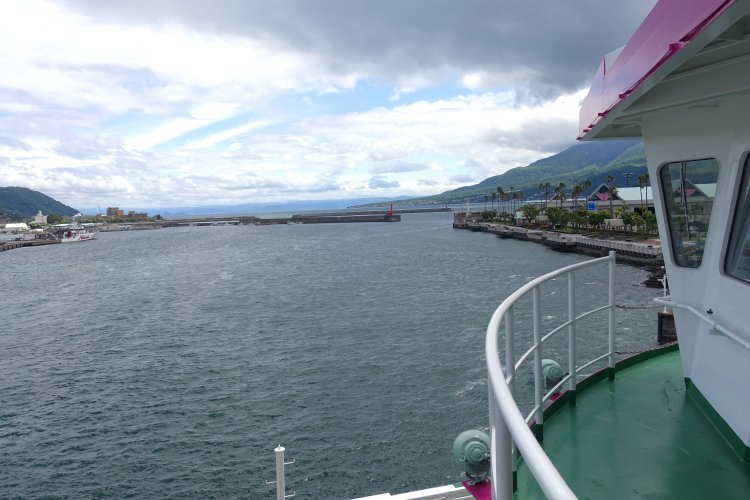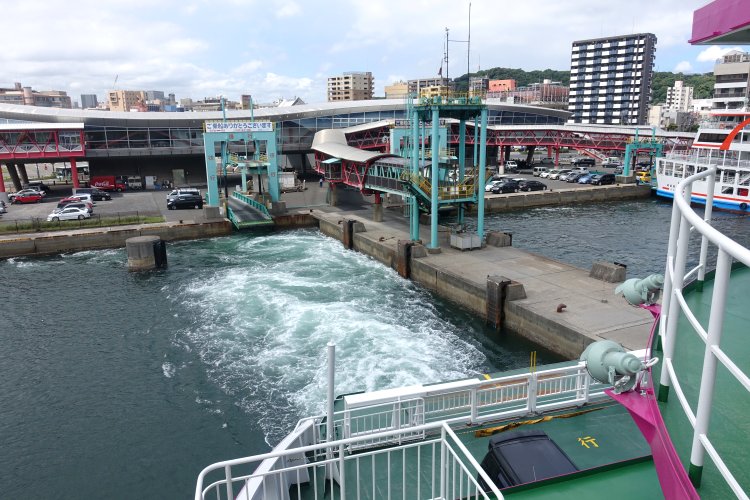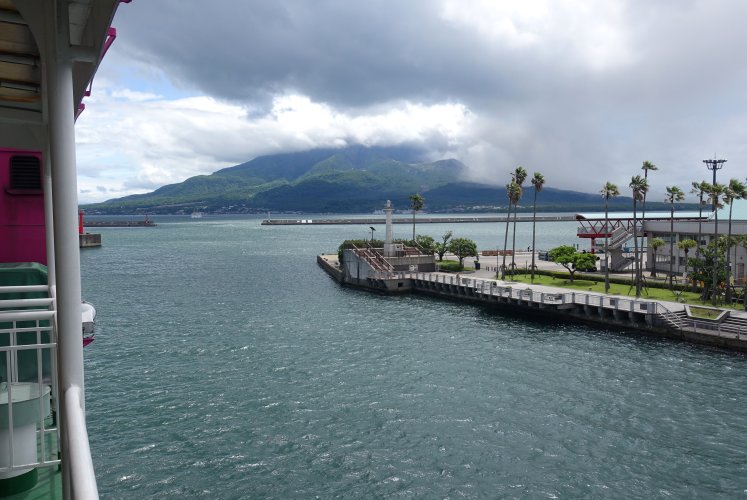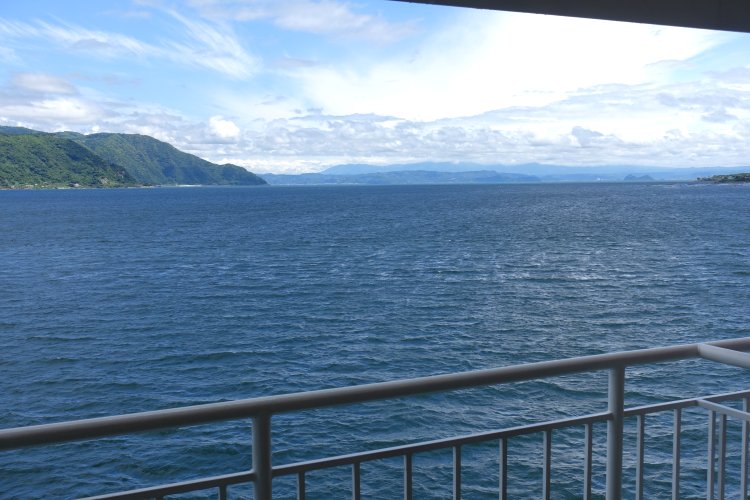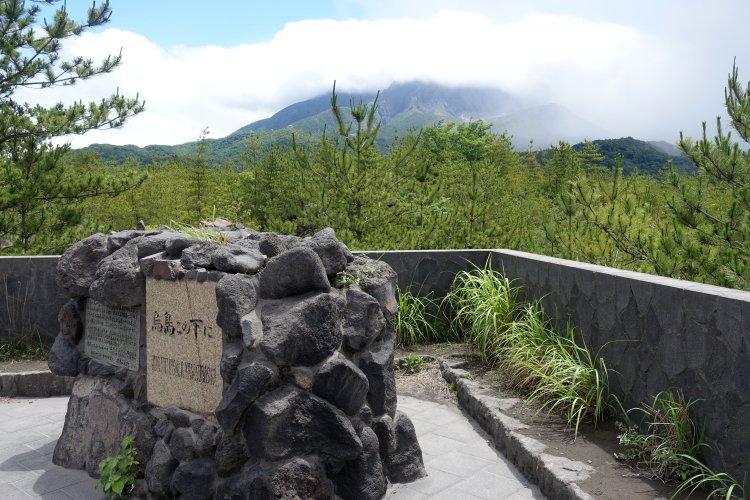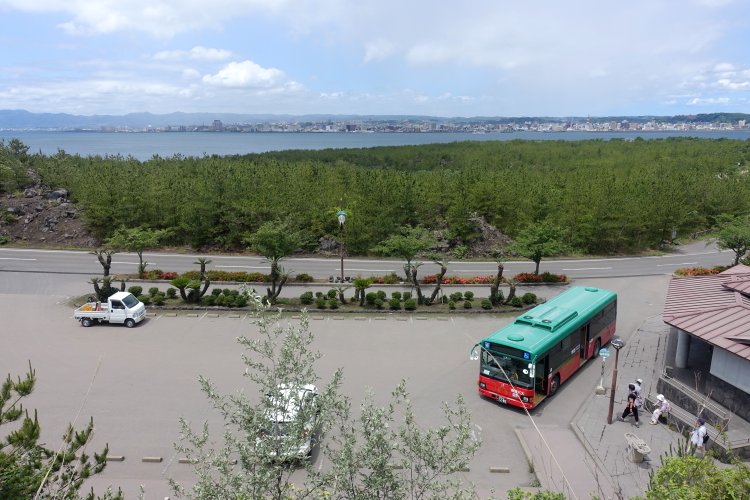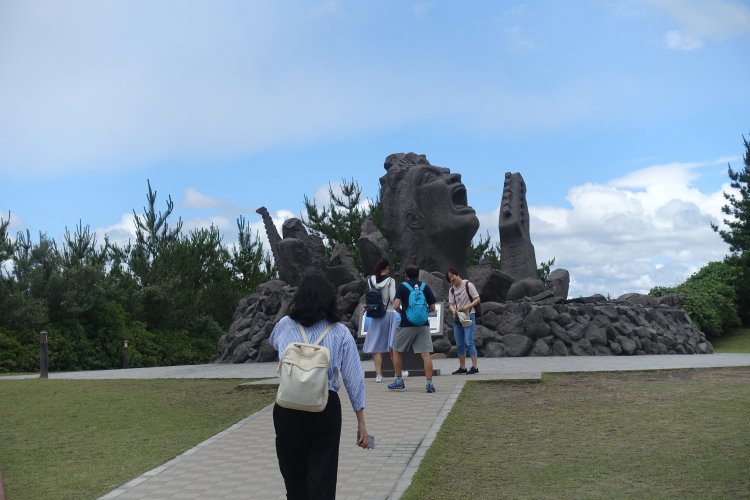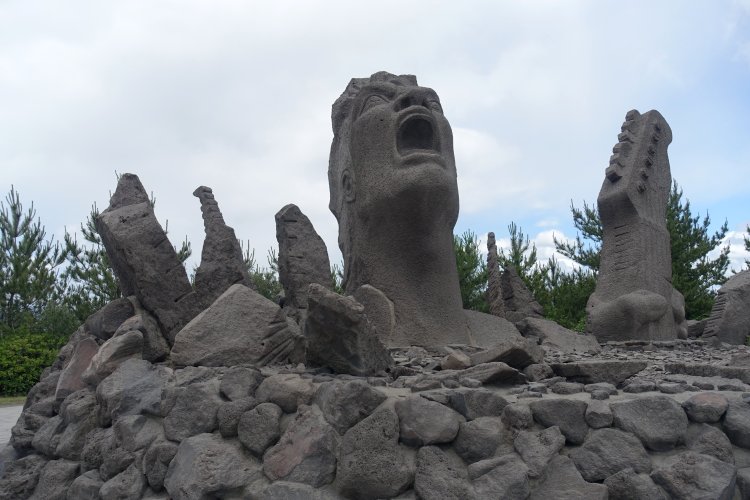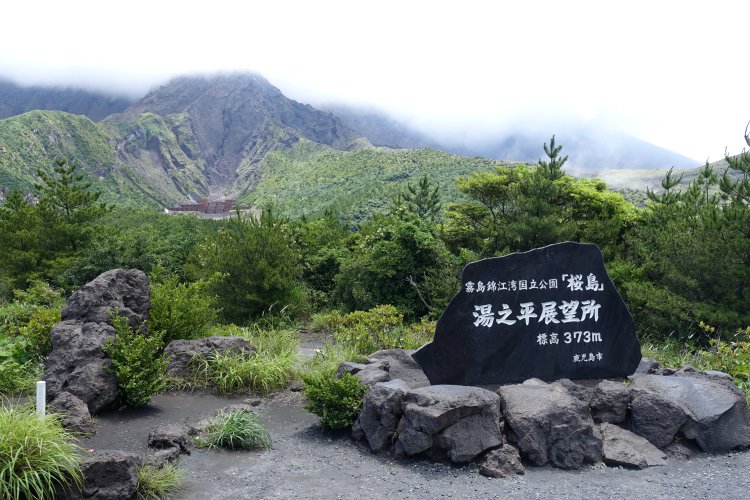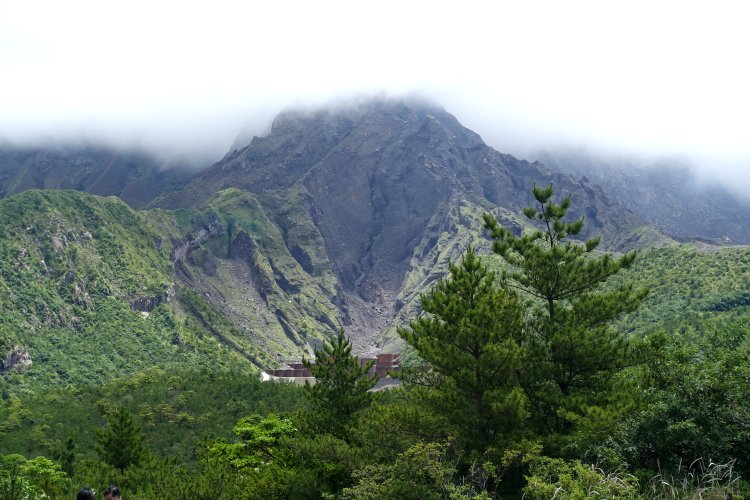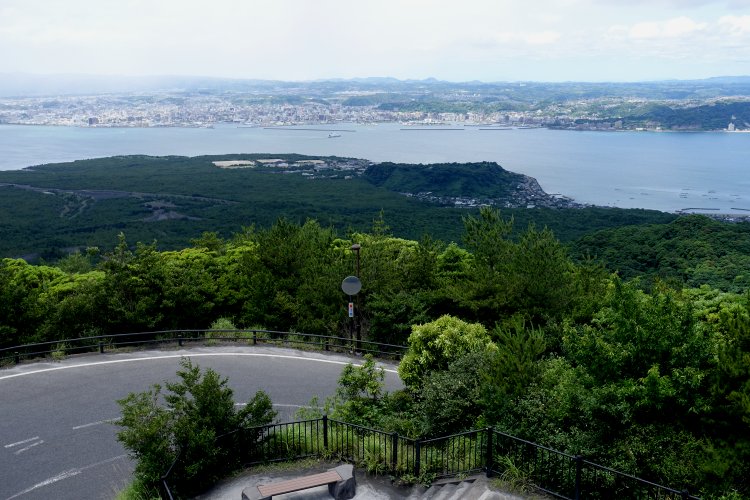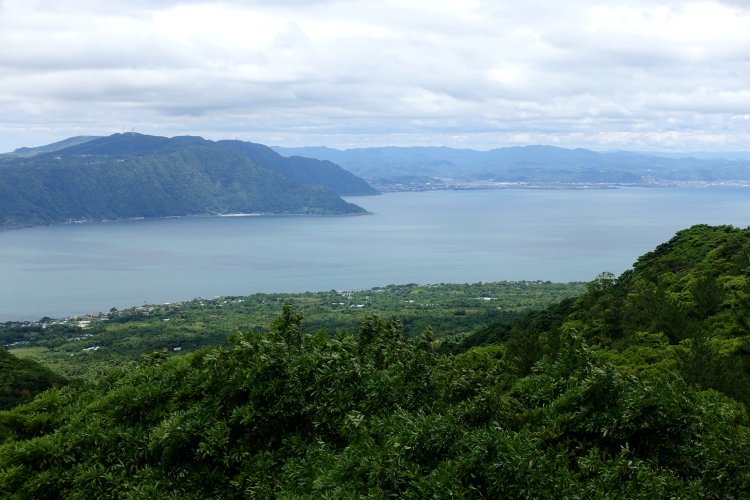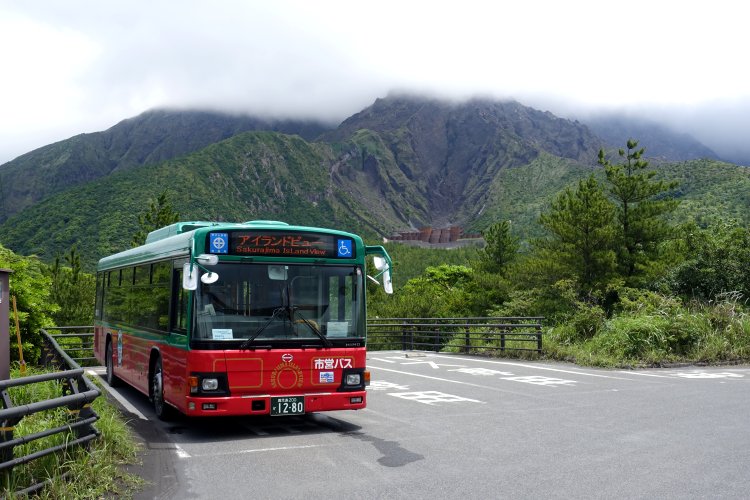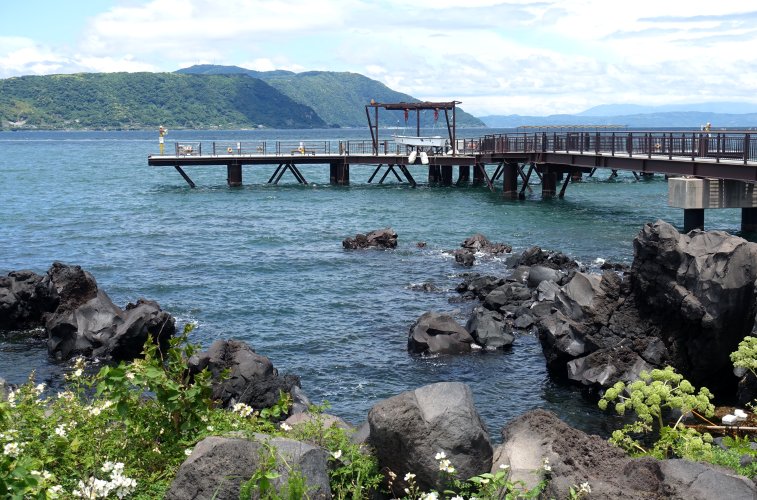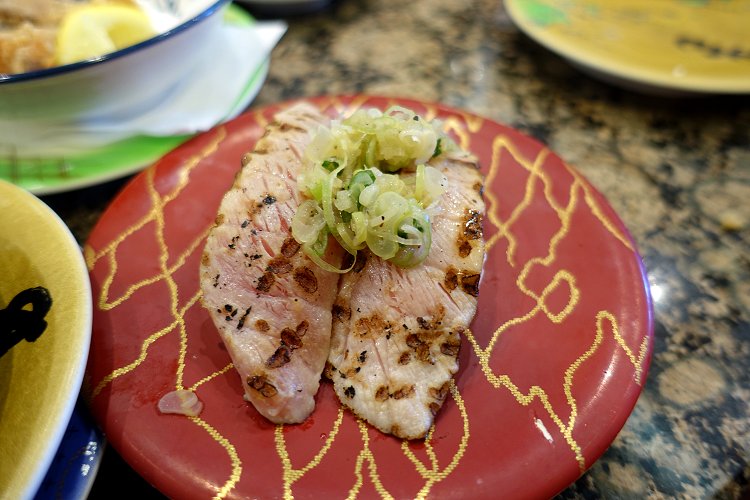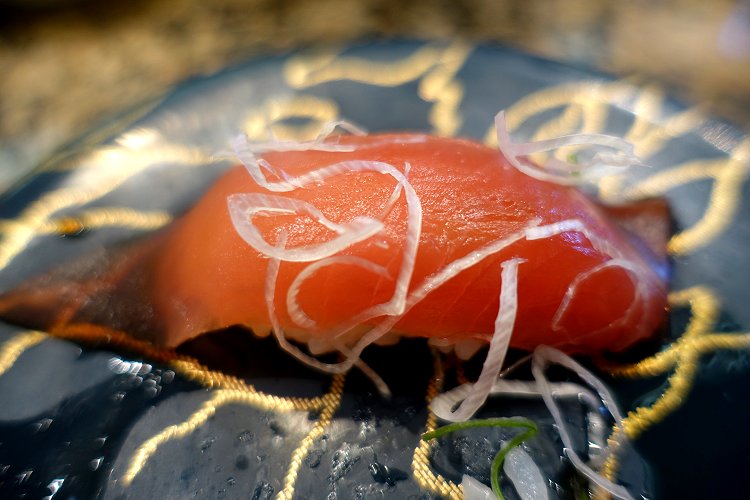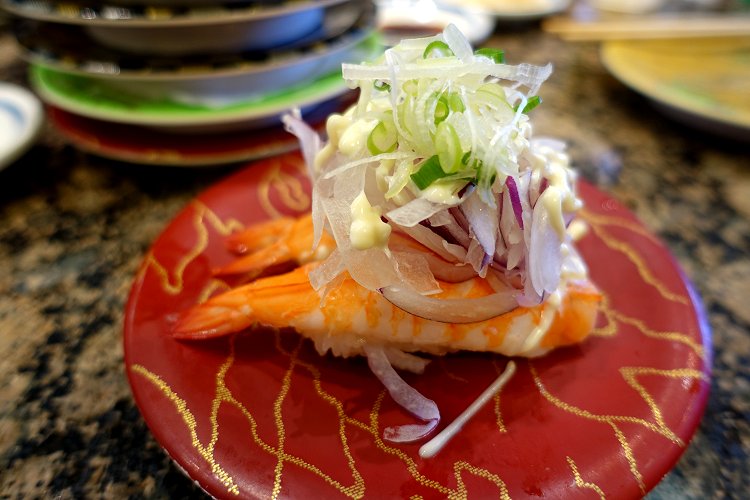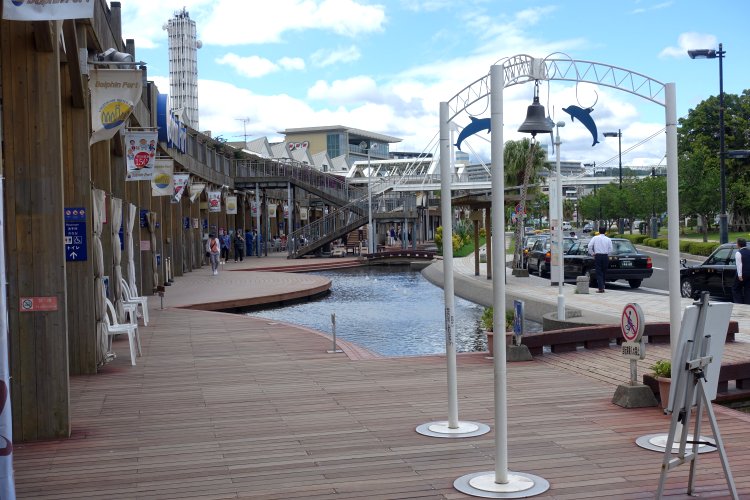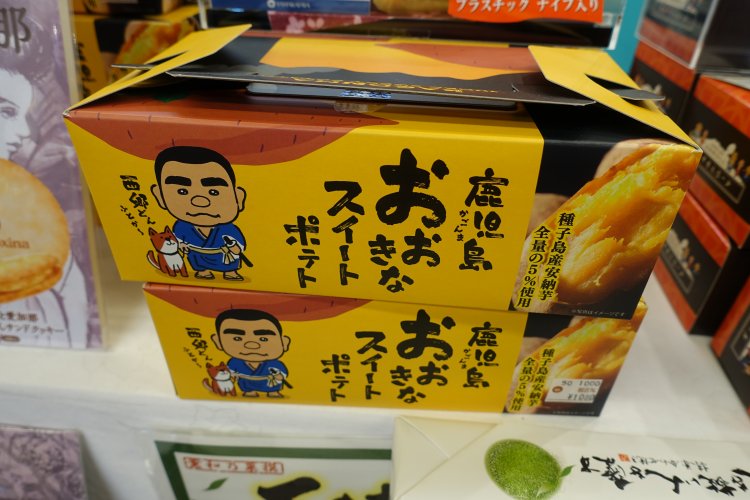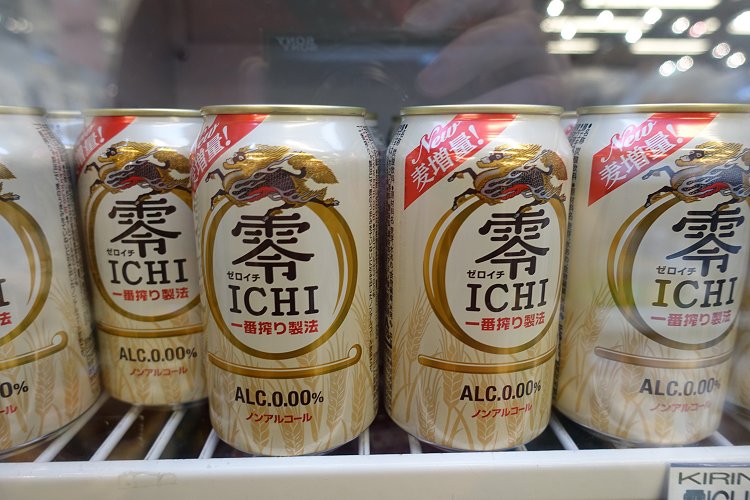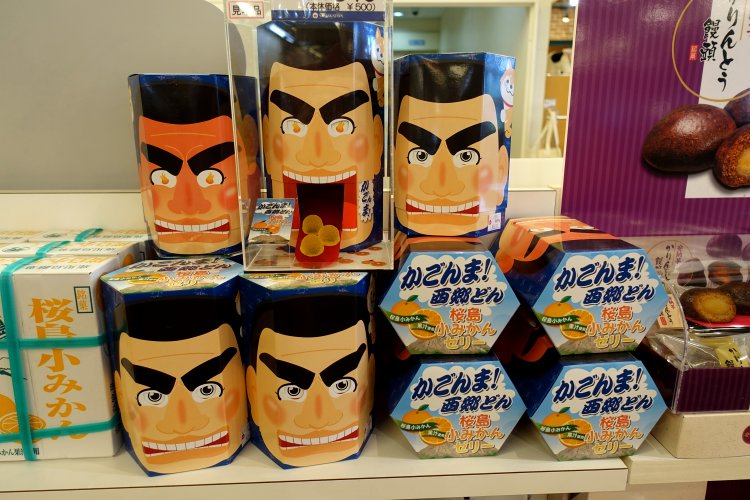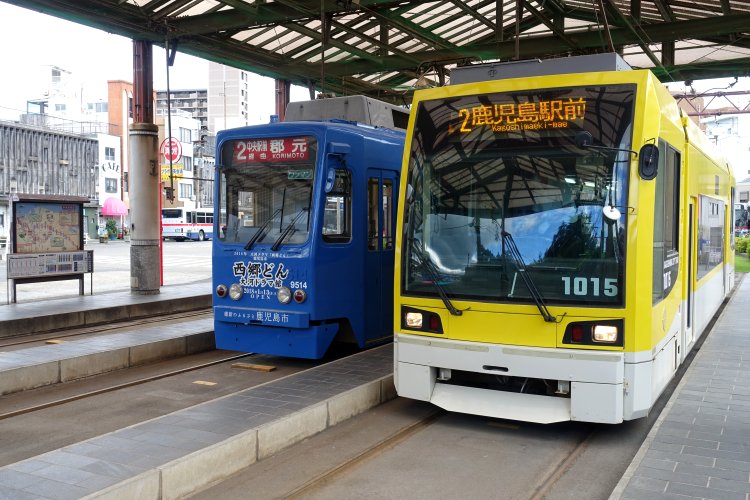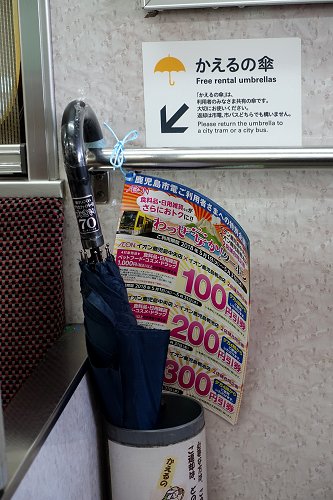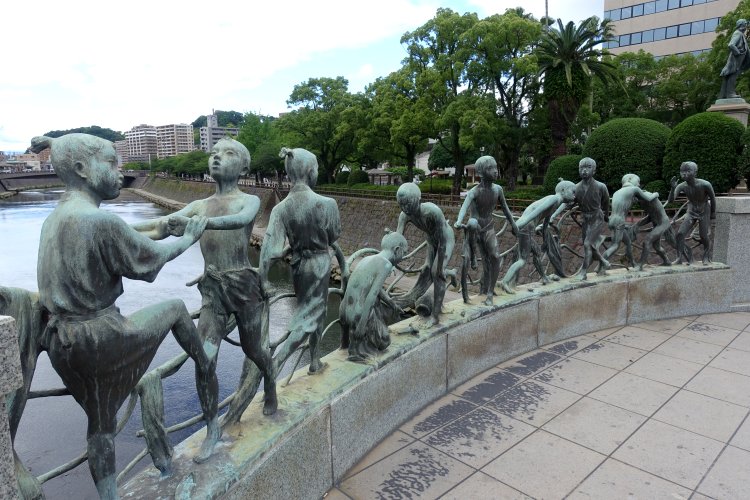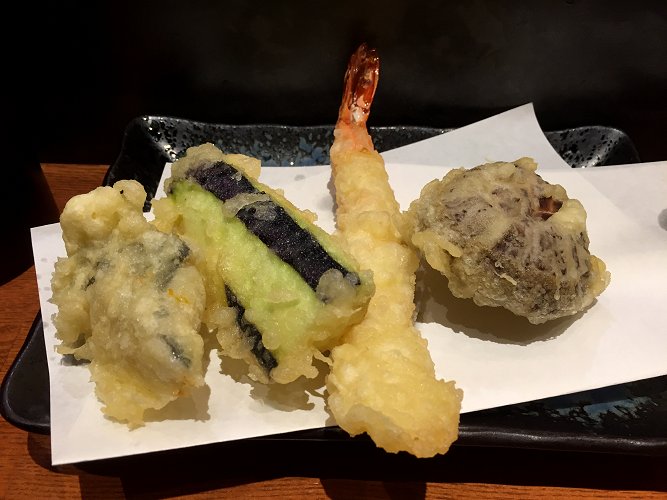Round The World and other travels
A frequent flyer's collection of trip diaries
This is: Japan 2018
Exploring Kagoshima
We woke up around 0715 and from our room window we could see a huge queue of high-school pupils waiting for the school bus. They were all immaculately turned out in uniform and standing in pairs, with no yelling, horseplay or any kind of bad behaviour. As if I needed reminding, we were in Japan! After the usual ablutions, we had a fairly basic breakfast in Seattle's Best; judging by the quality of the coffee, it wasn't a great advert for the Emerald City.
| Destination Facts: Kagoshima | |||||||||||||||
 |
|
||||||||||||||
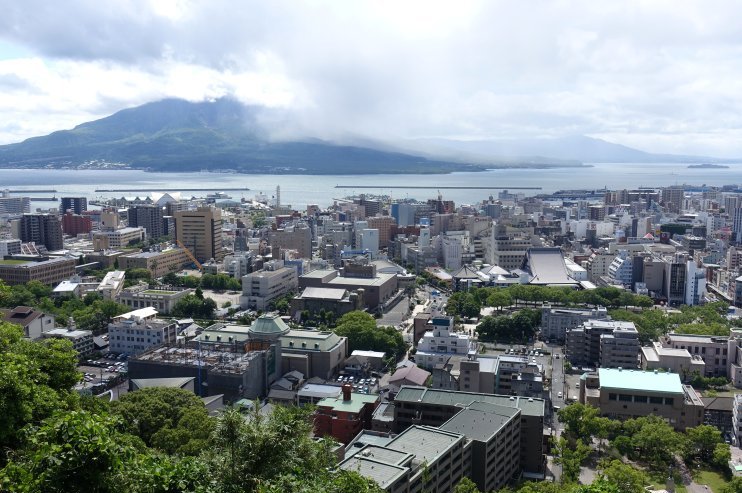
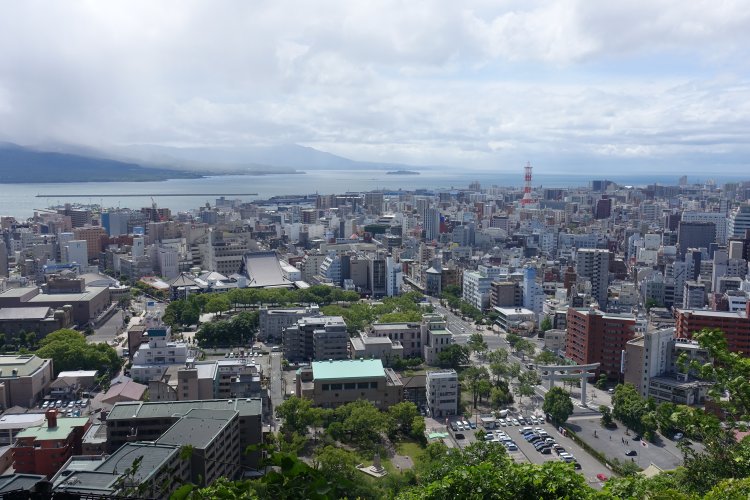 Bruce had prepared an outline plan to give
some shape to our full day in Kagoshima, and by 0930 we were ready
to set this in motion. The first step was for each of us to acquire
an oddly titled 1-Day Welcome Cute Pass, giving access to a range of
public transport options. (I wonder who came up with that name!)
Armed with these, we then caught a City View Bus to Shiroyama Park,
situated about 2km southwest of the city centre, on a hilly area
close to the ruins of Takayama Castle. The observation deck gave
impressive views over the city and across to Sakurajima, Japan's
most active volcano. Even as we enjoyed the views, the volcano was
releasing a steady stream of smoke and ash into the atmosphere.
Bruce had prepared an outline plan to give
some shape to our full day in Kagoshima, and by 0930 we were ready
to set this in motion. The first step was for each of us to acquire
an oddly titled 1-Day Welcome Cute Pass, giving access to a range of
public transport options. (I wonder who came up with that name!)
Armed with these, we then caught a City View Bus to Shiroyama Park,
situated about 2km southwest of the city centre, on a hilly area
close to the ruins of Takayama Castle. The observation deck gave
impressive views over the city and across to Sakurajima, Japan's
most active volcano. Even as we enjoyed the views, the volcano was
releasing a steady stream of smoke and ash into the atmosphere.
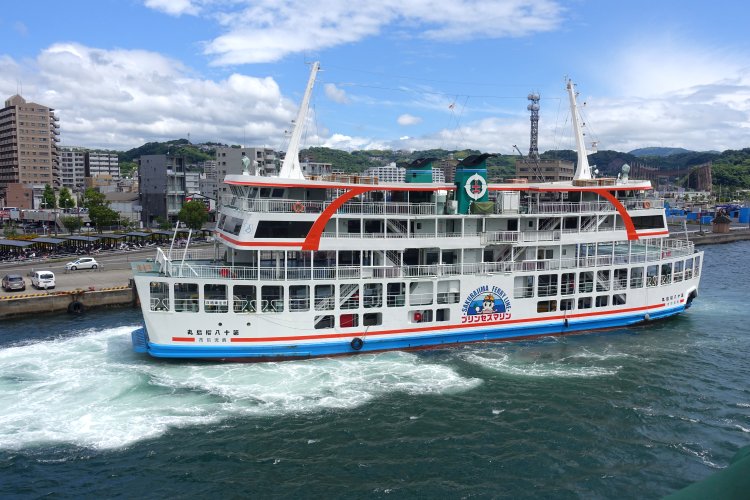 Another advantage of looking out from a viewpoint is
of course that it affords the possibiity to identify other places of
interest, and to gauge where they are and the relative distances involved.
After identifying the Sakurajima ferry terminal, we decided to walk
to this, rather than take another bus, a decision which in turn
allowed us to take a closer look at the castle ruins. It turned out
that the ferries sailed every 15 minutes. The vessels seemed
improbably high, with three car decks and further passenger decks -
just as well they were confined to these still waters!
Another advantage of looking out from a viewpoint is
of course that it affords the possibiity to identify other places of
interest, and to gauge where they are and the relative distances involved.
After identifying the Sakurajima ferry terminal, we decided to walk
to this, rather than take another bus, a decision which in turn
allowed us to take a closer look at the castle ruins. It turned out
that the ferries sailed every 15 minutes. The vessels seemed
improbably high, with three car decks and further passenger decks -
just as well they were confined to these still waters!
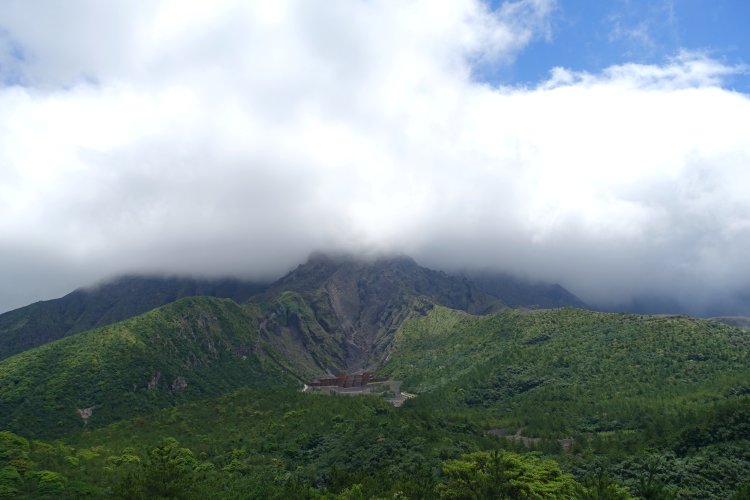 On arrival on Sakurajima - the name means
literally Cherry Blossom Island, except that it should
probably be former island, as lava
from the 1914 eruption connected it with the Osumi peninsula - we
boarded the Island View bus for immediate departure. This was a
service bus masquerading as a tour coach. There was only one bus per
hour, which made a series of strictly timed stops at various
attractions and viewpoints to allow brief visits and photos. Heaven
help anyone who didn't adhere to the schedule!
On arrival on Sakurajima - the name means
literally Cherry Blossom Island, except that it should
probably be former island, as lava
from the 1914 eruption connected it with the Osumi peninsula - we
boarded the Island View bus for immediate departure. This was a
service bus masquerading as a tour coach. There was only one bus per
hour, which made a series of strictly timed stops at various
attractions and viewpoints to allow brief visits and photos. Heaven
help anyone who didn't adhere to the schedule!
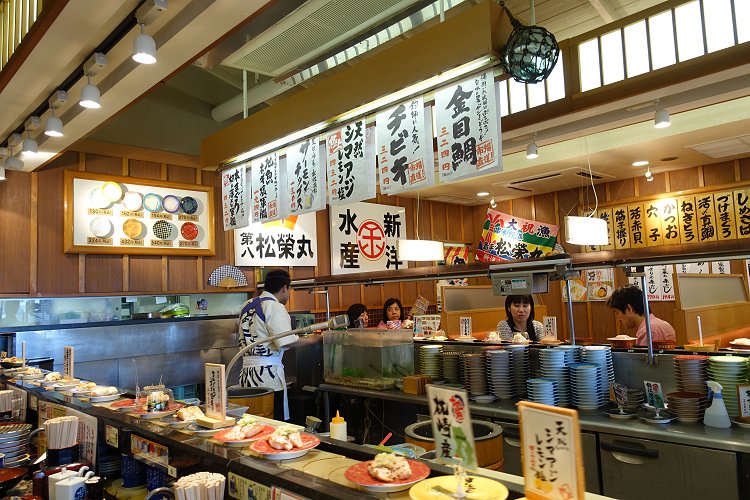
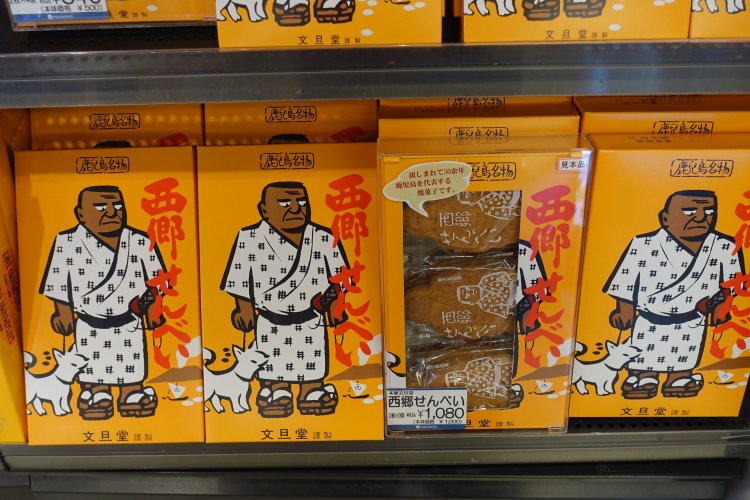 On return to the pier, we took a brief walk
around the shoreline and then boarded a ferry back to the city.
Following a short walk to the Dolphin Port area, we easily found
somewhere to eat. To be honest, we actually made a mistake and ended
up next door to our selected venue. This may well have been
a stroke of luck, as we found ourselves in a popular sushi
restaurant, where we had an excellent lunch comprising a mixture of
small plates of sushi, sashimi and other delights. Once we had
eaten, we found ourselves browsing a souvenir shop and being
fascinated by the cultural differences revealed in a series of weird
cartoon characters which adorned the packaging.
On return to the pier, we took a brief walk
around the shoreline and then boarded a ferry back to the city.
Following a short walk to the Dolphin Port area, we easily found
somewhere to eat. To be honest, we actually made a mistake and ended
up next door to our selected venue. This may well have been
a stroke of luck, as we found ourselves in a popular sushi
restaurant, where we had an excellent lunch comprising a mixture of
small plates of sushi, sashimi and other delights. Once we had
eaten, we found ourselves browsing a souvenir shop and being
fascinated by the cultural differences revealed in a series of weird
cartoon characters which adorned the packaging.
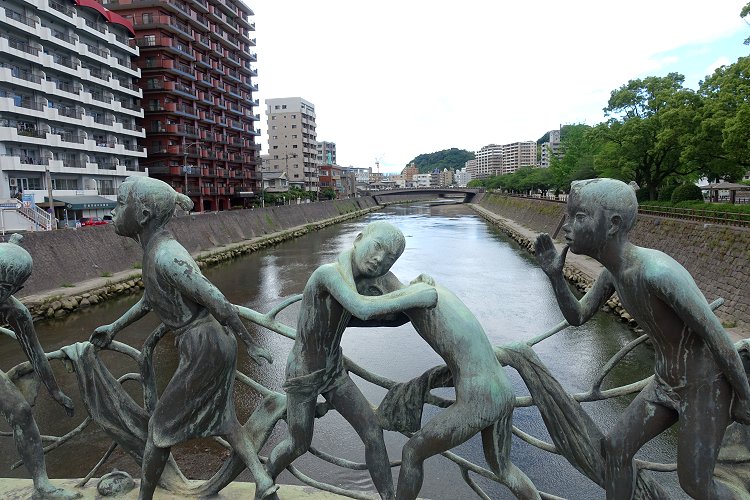 In due course, we took a No 2 tram to
Takamibaba and continued on foot via the Tenmonkan Densha Dori
bridge across the Kotsuki river, the bridge being noted for its
statues and sculptures, as well as the use of marble. It was a
relatively short walk from there back to base. During the walk, we
were kept interested by observing some of the realities of living in
the shadow of an active volcano. These included street-sweeping
machines specially made for ash disposal.
In due course, we took a No 2 tram to
Takamibaba and continued on foot via the Tenmonkan Densha Dori
bridge across the Kotsuki river, the bridge being noted for its
statues and sculptures, as well as the use of marble. It was a
relatively short walk from there back to base. During the walk, we
were kept interested by observing some of the realities of living in
the shadow of an active volcano. These included street-sweeping
machines specially made for ash disposal.
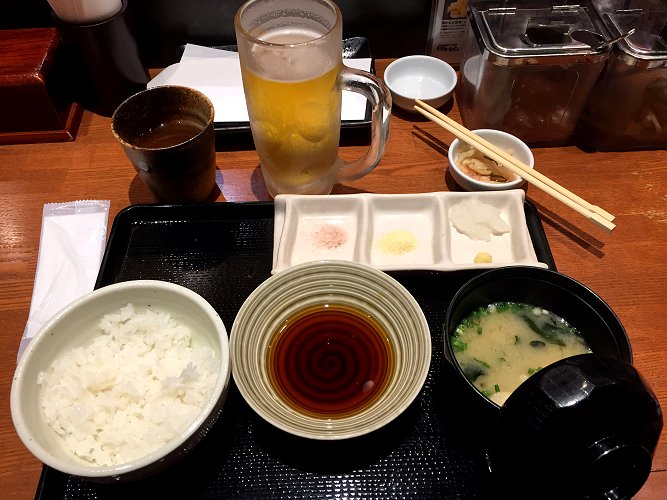 Later on, only a light dinner was needed. We
found a nice place in the main station and enjoyed an inexpensive,
but nonetheless impressive combination of rice bowl, tempura shrimp
and vegetables, and a bowl of miso soup, all washed down with a
refreshing beer.
Later on, only a light dinner was needed. We
found a nice place in the main station and enjoyed an inexpensive,
but nonetheless impressive combination of rice bowl, tempura shrimp
and vegetables, and a bowl of miso soup, all washed down with a
refreshing beer.
